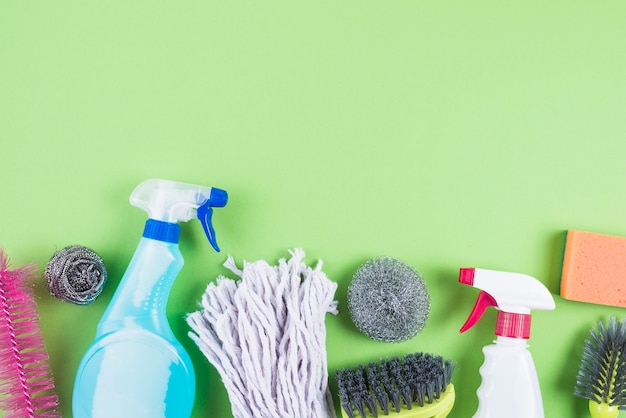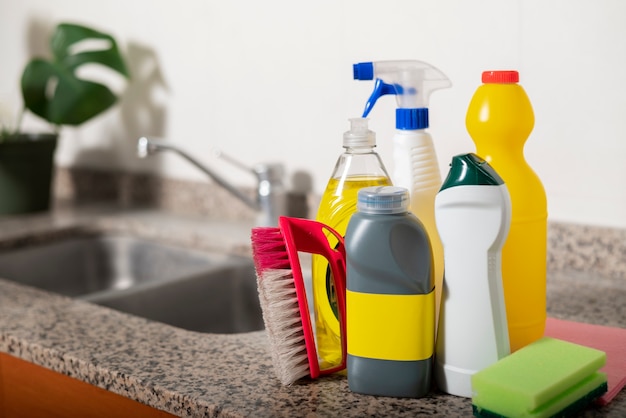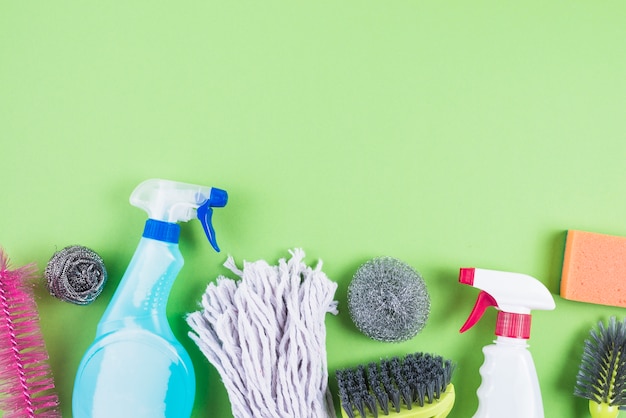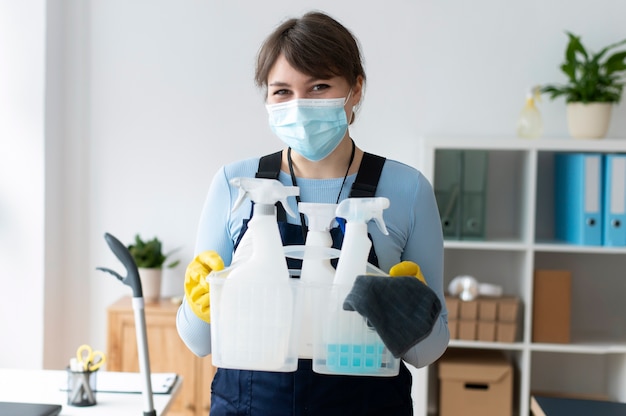Is Your Cleaning Routine a Lie? The Science Behind What Really Makes Surfaces Clean!

Let’s face it, our perception of “clean” is often based on aesthetics. A quick wipe with a disinfectant wipe might leave a surface visually spotless, but does it truly eliminate the microscopic threats lurking beneath? Many of us are unknowingly creating an illusion of clean, neglecting the crucial science behind true sanitation.
Have you ever finished cleaning a surface only to find a greasy fingerprint reappear moments later? Or maybe you’ve scrubbed at a stubborn stain, convinced it was vanquished, only to see it resurface the next day? These frustrating experiences might be a sign you’re falling victim to common cleaning myths. We’ve all been there, relying on cleaning routines passed down through generations or trusting the marketing claims on cleaning product labels. But what if the truth is far more fascinating – and effective?

The Illusion of Clean
Let’s face it, our perception of “clean” is often based on aesthetics. A quick wipe with a disinfectant wipe might leave a surface visually spotless, but does it truly eliminate the microscopic threats lurking beneath? Many of us are unknowingly creating an illusion of clean, neglecting the crucial science behind true sanitation.
The Importance of Cleanliness Beyond the Surface
Maintaining a clean environment goes way beyond creating a visually pleasing space. Dust, grime, and allergens can wreak havoc on our health. Dust mites can trigger allergies and asthma, while bacteria and viruses left behind on surfaces can spread illness. By implementing a science-backed cleaning routine, we actively create a healthier living environment, protecting ourselves and our families from these hidden threats.
The Wiping Fallacy
We’ve all been guilty of the quick “wipe-down” approach. A spritz of all-purpose cleaner, a swipe with a cloth, and voila, clean surfaces, right? Wrong. This method often simply redistributes dirt across the surface instead of truly removing it. Effective cleaning requires a two-step approach:
- Loosening and Lifting the Dirt: This initial step involves applying a cleaning product that breaks down the bonds holding dirt particles to the surface. Surfactants, for example, act like tiny magnets, attracting and loosening greasy grime.
- Removal: Once loosened, dirt needs to be physically removed. This can involve rinsing with water, wiping with a clean cloth, or vacuuming depending on the surface and cleaning product used.

The All-Purpose Trap
The convenience of all-purpose cleaners can be tempting. They promise to tackle everything from kitchen grease to bathroom grime. However, these one-size-fits-all products often fall short. Different types of dirt require different approaches. Here’s why:
- Specificity Matters: Grease splatters require a different cleaning approach than mineral deposits in hard water stains. Grease is best tackled with surfactants, whereas acids dissolve mineral deposits. Choosing the wrong cleaning product can leave you frustrated and with lingering dirt.
The Ignorance of Enemy Types
Understanding what you’re fighting against is key to victory! Here’s a breakdown of common dirt enemies and their weaknesses:
- Fats and Oils: These greasy messes love to cling to surfaces. They’re often found in kitchens and bathrooms.
- Proteins: Protein-based stains like blood or food residue require enzymes that break down protein bonds.
- Minerals: Hard water stains, soap scum, and mineral deposits are common bathroom foes. Acids and alkalis (bases) are effective in dissolving these mineral buildups.
- Mold and Mildew: These moisture-loving organisms require specialised cleaning products containing fungicides to truly eliminate them.
By understanding the type of dirt you’re dealing with, you can choose the right weapon for the job.
The Science Behind True Cleanliness: Unveiling the Power of Cleaning Products
Forget magic potions and miracle cleaners. The secret to effective cleaning lies in the science behind the ingredients. Let’s delve into the world of cleaning product ingredients and how they work their magic:
Cleaning Agents: Targeting Specific Dirt Enemies:
Cleaning products aren’t just a mixture of pleasant scents and colors. They contain key ingredients called “cleaning agents” that target specific types of dirt. Here are some of the main players:
- Surfactants: These are the heroes in the fight against greasy grime. They act like tiny magnets, attracting dirt particles and breaking down the bonds holding them to the surface. This allows for easy rinsing or wiping away.
- Acids and Alkalis (Bases): Don’t let the harsh names scare you. Acids and alkalis are crucial for tackling different types of dirt. Acids dissolve mineral deposits like hard water stains and soap scum. Alkalis, often found in degreasers, break down greasy grime and soap scum.
- Enzymes: Think of enzymes as biological assassins. They are highly targeted cleaners that break down specific types of organic matter. For example, enzymatic cleaners are effective against protein stains like blood or food residue.
Understanding these key ingredients empowers you to choose cleaning products that are most effective for the specific

The Science Behind True Cleanliness
The world of dirt isn’t as simple as it seems. We encounter a variety of contaminants in our daily lives, including:
- Fats and Oils: These greasy messes love to cling to surfaces. Thankfully, science comes to the rescue with surfactants, a key ingredient in many cleaning products. Surfactants act like tiny magnets, attracting and breaking down greasy dirt, making it easy to wipe away.
- Minerals: Hard water stains, soap scum, and mineral deposits can be a real pain. Here, acids and alkalis come into play. Acids dissolve mineral deposits, while alkalis (often found in degreasers) break down soap scum.
Exploring Cleaning Product Ingredients
Understanding the science behind cleaning product ingredients empowers you to choose the right weapon for the cleaning battle. Here are some key players:
- Surfactants: Remember those dirt-attracting magnets? That’s the magic of surfactants! They lift dirt and grime from surfaces, making them easy to rinse away.
- Acids and Alkalis (Bases): These powerhouses tackle different types of dirt. Acids dissolve mineral deposits, while alkalis (often found in degreasers) cut through greasy grime and soap scum.
- Enzymes: These biological warriors are highly targeted cleaners. They break down specific types of organic matter, such as protein stains or food residue.
Building a Better Cleaning Routine: From Science to Sparkling Surfaces
Now that you’ve unlocked the secrets of cleaning science, it’s time to translate that knowledge into a powerful cleaning routine! Here’s how to transform your cleaning efforts from frustration to sparkling success:
Decoding the Label: Unveiling the Cleaning Product’s Secrets
Don’t be fooled by flashy packaging or catchy marketing claims. Cleaning product labels hold the key to making informed choices. Here’s what to pay attention to:
- “Uses” Section: This is your roadmap to cleaning success. Look for a clear description of the types of dirt and surfaces the product is designed to tackle. Does it target greasy messes, disinfect surfaces, or remove hard water stains? Choose a product specifically formulated for the job at hand.
- Ingredients List: While not always as user-friendly, understanding the key ingredients can be helpful. Look for terms mentioned earlier, like “surfactants” for grease-fighting power, “acids” for dissolving mineral deposits, or “enzymes” for tackling protein stains.
- Safety Information: Cleaning products can contain powerful ingredients, so prioritize safety. Read and follow all warnings and precautions. This might include wearing gloves for harsh chemicals, ensuring proper ventilation when using strong cleaners, and keeping products out of reach of children and pets.

The Right Tool for the Job: Matching Products to Surfaces and Situations
Imagine trying to build a house with only a hammer. It might get the job done eventually, but it wouldn’t be efficient. The same applies to cleaning. Different surfaces and messes require specific cleaning products for optimal results. Here are some key considerations:
- Surface Compatibility: Not all cleaning products are created equal. Some might be too harsh for delicate surfaces like granite countertops or wood floors, while others might be ineffective against tough grime on oven doors. Choose a product specifically formulated for the surface you’re cleaning to avoid damage or subpar results.
- Dirt Type Targeting: Remember our discussion about enemy types? Match the cleaning product to the specific dirt you’re battling. For greasy kitchen messes, a degreaser with surfactants is your best bet. For hard water stains in the bathroom, an acidic cleaner will dissolve the minerals. By targeting the specific dirt, you’ll achieve a more thorough and lasting clean.
Building a Cleaning Routine that Fits Your Life
While choosing the right products is crucial, an effective cleaning routine goes beyond just the tools. Here are some additional tips for success:
- Frequency Matters: Develop a cleaning schedule that aligns with your lifestyle and the level of mess your household generates. Daily tasks like wiping down counters or picking up clutter can prevent bigger messes from accumulating. Weekly deep cleaning sessions can tackle areas like bathrooms and floors.
- The Power of Prevention: A little prevention goes a long way. Invest in doormats to trap dirt before it enters your home. Wipe up spills immediately to prevent them from setting in. By taking preventative measures, you can significantly reduce your cleaning workload.
Making Cleaning Manageable: Embrace Micro-Cleaning and Consider Professional Help
Don’t wait for the weekend to tackle a mountain of mess. Break down large cleaning tasks into smaller, more manageable chunks. Spend 10 minutes tidying up the kitchen after dinner or wipe down the bathroom sink while waiting for the kettle to boil. These micro-cleaning sessions can significantly improve the overall cleanliness of your home without feeling overwhelming.
Life can get busy, and sometimes even the most well-intentioned cleaning routines fall by the wayside. If you find yourself struggling to keep up, consider partnering with a professional cleaning service. Companies like Optima Cleaners offer a range of services to suit your needs, from weekly maintenance cleans in the office to deep cleaning sessions in your home spring cleaning. Their team of experts is equipped with the knowledge and tools to tackle even the toughest cleaning challenges, freeing up your time and energy to focus on what matters most.
